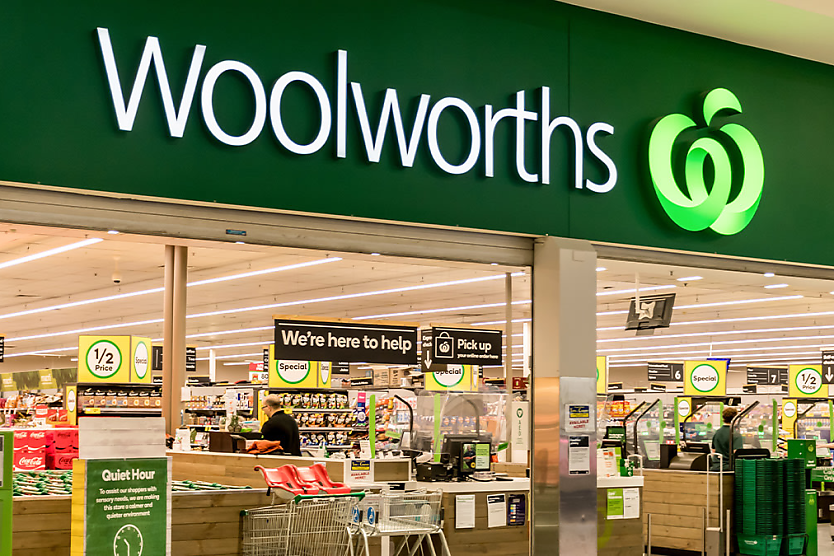Woolworths’ major price drop announcement on back of job cuts
SHARE THIS ARTICLE

After announcing a $400 million cost cutting plan just three months prior, Woolworths has announced a major round of price reductions on nearly 400 popular grocery items aimed at incentivising consumers to shop with the supermarket giant as competition with Coles thickens.
With growing competitive tension with Coles and sustained political disdain over price gouging allegations, Woolworths has moved to decrease prices on almost 400 common grocery items in hopes of turning the tide back towards the supermarket giant.
Starting Wednesday (14 May), the shelf price products will fall by an average of 10 per cent, with families who spend $150 on their weekly shop set to save around $15 a week when purchasing these lower-priced products, claimed Woolworths in a statement. These products are slated to reside at these lower prices at least until 2026.
“We know that managing household budgets continues to be challenging for our customers,” said Bardwell, speaking on the changes.
“Customers consistently tell us they need more value from their shop, and that they expect us to do more to help. Today (12 May), marks the start of a real, tangible change customers will see on the shelf prices of hundreds of products when they shop with us, both in-store and online. And it’s just the beginning.”
“We’ve focused on highly rated family favourites – things like Greek yoghurt, frozen berries, chicken schnitzel, as well as essentials, including flour, bread, rice, and nappies,” said Bardwell.
Although Bardwell admitted that the individual decreases aren’t set to manifest a “dramatic” difference, the longevity of the initiative will lead to real savings.
“This isn’t just a short-term promotion; it’s about lower shelf prices on the products we know customers regularly shop for, and providing genuine, lasting, and dependable value they can count on,” said Bardwell.
“Individually, each lower shelf price might not seem like a dramatic difference, but they will add up to real savings.”
Office worker job cuts
Bardwell has quickly asserted herself in the new regime for Woolworths, taking over from former chief executive Brad Banducci in 2024. One of Bardwell’s initial moves as chief executive was to implement a $400 million cost-saving plan, which included cuts to Woolworths’ office-based staff.
As previously reported by HR Leader, as part of the cost-saving plan, the supermarket giant almost simultaneously implemented a return-to-office mandate and then announced a restructuring of its office employees, which included job cuts.
In a statement given to HR Leader at the time, a Woolworths Group spokesperson said: “In this environment, as with all retailers, it’s even more important to manage our costs carefully to allow us to reinvest in providing value to our customers and improving our offer to meet their changing expectations.”
“This week, we also asked our office-based team to prioritise face-to-face work in the office. In addition to this, we are reviewing our office team structures.
“These are difficult decisions, and we certainly don’t take them lightly. However, they are necessary to ensure our structure is agile, efficient and remains focused on customers. These changes will also make it easier for our partners to do business with us.”
The price discount move by Woolworths is set to cost $100 million on an annualised basis in hopes of getting consumers back into the supermarket, with the announcement coming just three months after the cost-saving strategy was put into place.
According to the AFR, investors have been reassured that the entirety of the $400 million saved in the cost cutting plan would not be put into price, with the exact number derived from the plan towards the discounts being unconfirmed.
Industrial action and price gouging allegations
In terms of sales and profits, Woolworths has somewhat struggled since industrial action took place across various Woollies warehouses in Victoria and NSW back in 2024 for a total of 17 days, which cost the supermarket $95 million.
The strikes – spurred by warehouse workers’ resentfulness towards an AI framework – made it “hard to recover” from the supply chain disruptions it caused.
Back in February 2025, Woolworths acknowledged the impacts these strikes had on their half-year results, labelling them as “below our expectations”.
The results showed that the supermarket made $739 million in net profit in the six months to 31 December 2024 – a 20.6 per cent decrease from a year prior, with group earnings also dropping 14.2 per cent to $1.4 billion.
“The team has worked incredibly hard to recover from supply chain disruptions caused by industrial action in November and December,” said Bardwell.
“We came to an agreement that is fair and sustainable and enables ongoing productivity improvements critical to maintaining competitiveness. In Victoria, sales have not yet fully recovered, but availability and customer metrics are returning to pre-disruption levels with ongoing efforts to regain customers.”
Price-gouging allegations surrounding both Woollies and Coles have done tremendous damage to their reputation since the beginning of early 2022. This was heightened during the 2025 federal election as Prime Minister Anthony Albanese took aim at the supermarkets, proposing new laws around price-gouging.
Albanese announced plans to implement a taskforce to advise on an “excessive pricing regime”, which will be overseen by the Australian Competition and Consumer Commission (ACCC).
RELATED TERMS
When a company can no longer support a certain job within the organisation, it redundancies that employee.
Kace O'Neill
Kace O'Neill is a Graduate Journalist for HR Leader. Kace studied Media Communications and Maori studies at the University of Otago, he has a passion for sports and storytelling.

